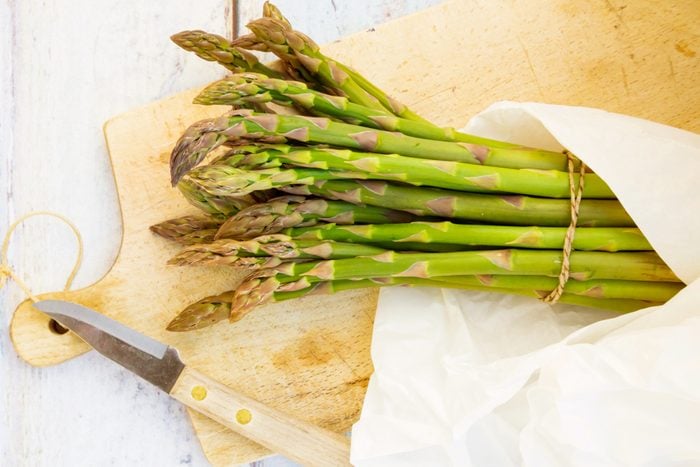How to Tell If Asparagus Is Bad
Updated: Feb. 07, 2023

Is your asparagus soft or mushy? Has it gone limp in the refrigerator? Here's how to tell if asparagus is bad or if it's still good to eat.
I get excited about spring produce. After a long winter of root vegetables and heavy stews, I’m ready for fresh and vibrant greens. When the farmers market opens, the stalls are filled with radishes of varying colors, salad greens, onions, fennel, rhubarb and as many berries as you can pack into your bag. My personal favorite, though, is asparagus. Spring asparagus bursts with flavor, and it tastes great no matter what asparagus recipe you use.
Asparagus doesn’t have an infinite shelf life, though, so you may be wondering how to tell if asparagus is bad. There are a few telltale signs that indicate asparagus has gone from good to past-its-prime.
Signs Your Asparagus Has Gone Bad
Like most spoiled food, you’ll want to pay attention to the texture, color and smell of the asparagus.
The tips tend to go soft first, followed by a shriveling of the stems. The stalks will go from bright green and firm to dull-colored and limp when it’s starting to reach its expiration date. By the time the tips turn black, you’ll notice they’re completely mushy and probably smell a little funky, too.
If your asparagus is slimy or sticky, feels mushy and soft, smells foul or has visible signs of mold, it’s time to toss it.
How to Pick Asparagus at the Store
To maximize the storage time of asparagus, you’ll want to pick the best bunch before you leave the grocery store or farmers market. Look for bunches with firm, bright green stems. The stalks should stand straight and have a smooth, unwrinkled texture. It’s always best to look for a bunch with similarly-sized stalks, a good asparagus cooking tip to help each stem cook evenly.
If you see a bunch of asparagus with slimy tops, or if the stems look limp, dull or wrinkled, select a different bundle.
The Best Way to Store Asparagus
Asparagus really tastes best the day you buy it. But if asparagus isn’t on the meal plan that night, you’ll want to store it correctly so it will stay good for as long as possible.
How to Store Raw Asparagus
If you have space in your refrigerator, store asparagus like you see it at the grocery store: upright, like flowers. Trim a tiny bit off the bottom of the stems and place the asparagus, stem-side down, in a mason jar with an inch of water. Cover the tops loosely with a plastic bag. Asparagus should last four to five days this way.
When upright storage isn’t in the cards, wrap the asparagus stems with a damp paper towel. Store them in a plastic bag or reusable produce bag in the crisper drawer, where they’ll last three to four days. Check the paper towel to make sure it’s still damp and turn the bag over every day to prevent asparagus from getting mushy on the bottom.
Can you freeze raw asparagus? You bet! It’s best to blanch it quickly to set the color, which also helps the asparagus maintain its crisp texture when it thaws. That said, blanching is not required, so do it if you have time, and don’t worry if you don’t.
To freeze asparagus, cut the stalks into 1-inch pieces if desired, or freeze the stalks whole. Keep the asparagus in a single layer in a freezer-safe bag, where they’ll be good for about a year.
How to Store Cooked Asparagus
To store cooked asparagus, pop it into an airtight container and store it, covered, in the refrigerator, where it lasts three to four days. It will become less crisp every day, and it will probably be very soft by the last day.
You can always freeze cooked asparagus, too, which will help to preserve its texture. Freeze the asparagus in a single layer in a freezer-safe bag and store it in the freezer for up to a year.
